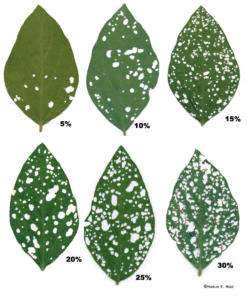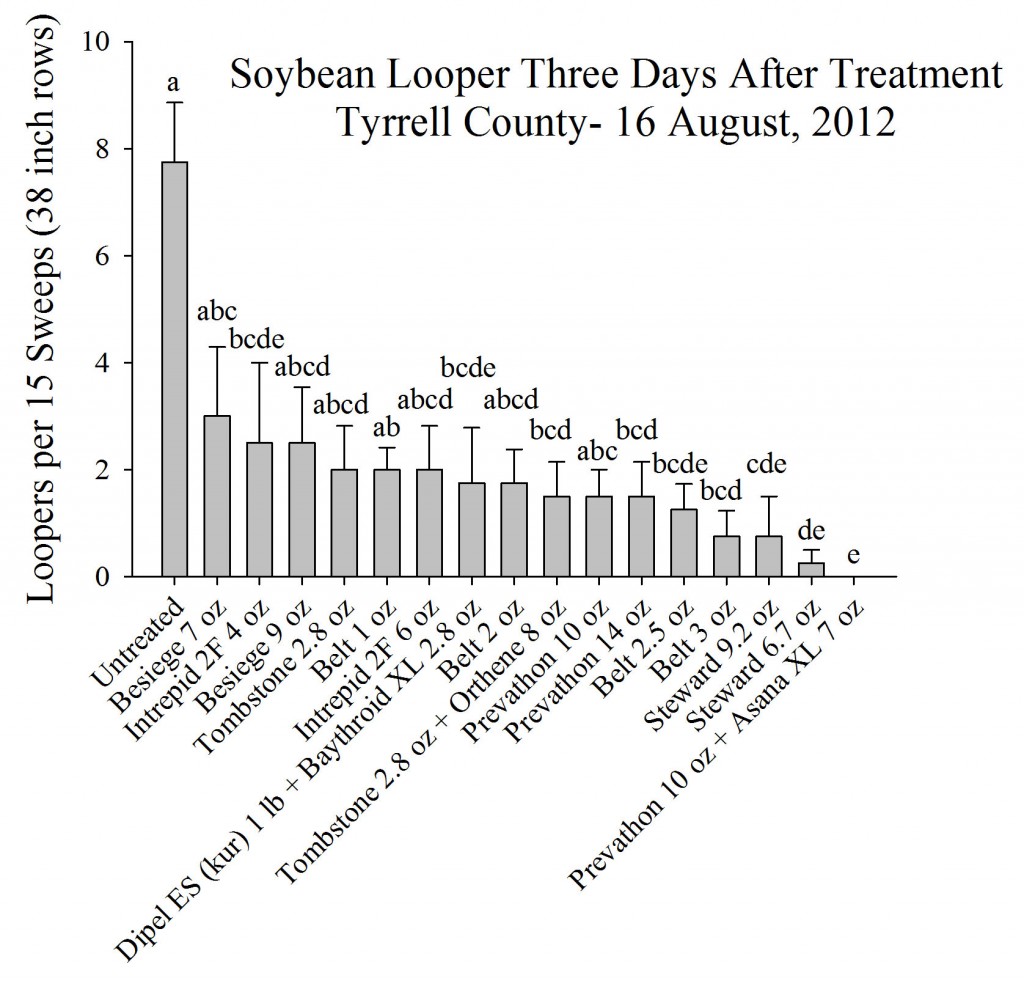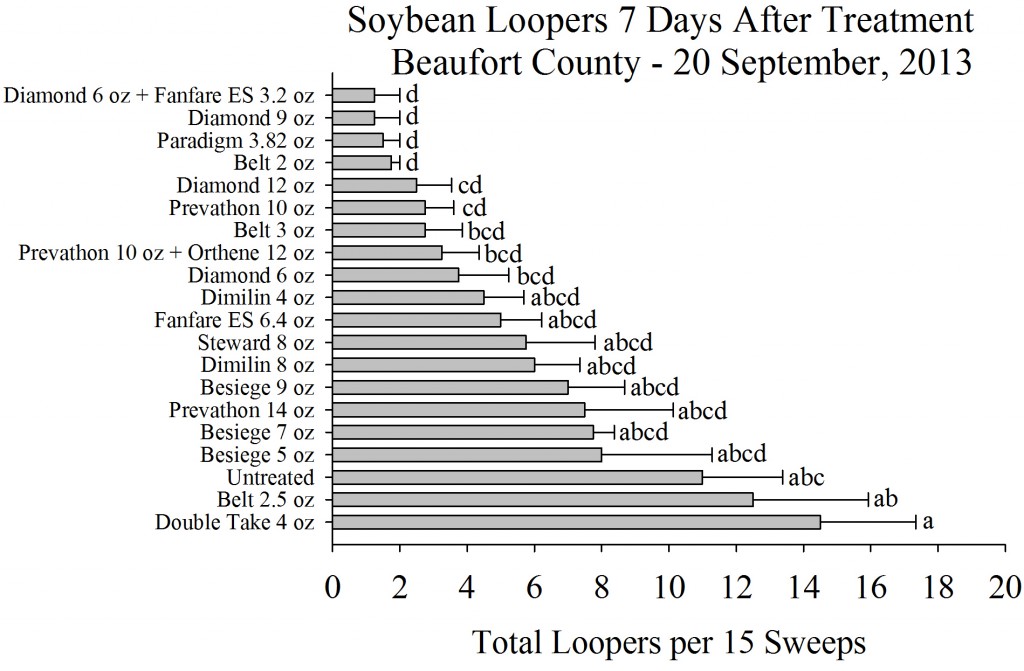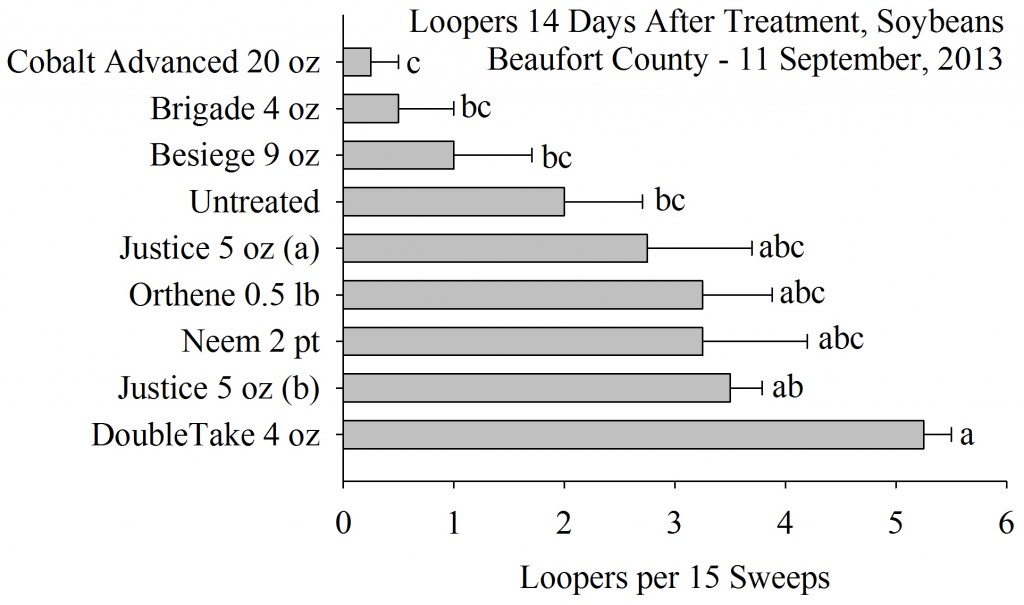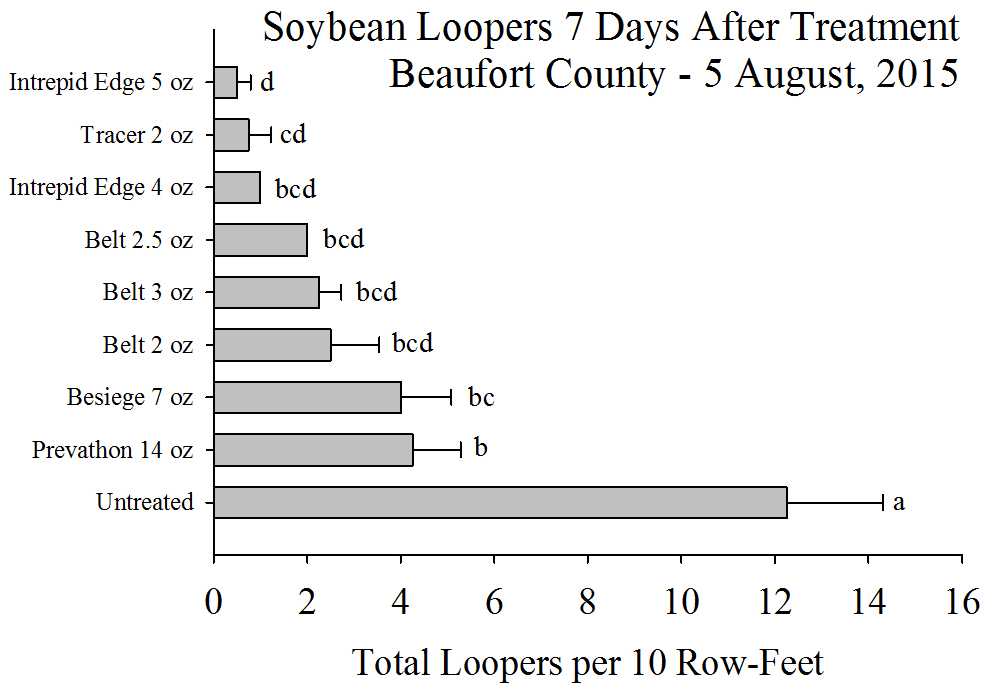Important Changes to Insecticide Recommendations for Soybean Loopers in the Blacklands
go.ncsu.edu/readext?368846
en Español / em Português
El inglés es el idioma de control de esta página. En la medida en que haya algún conflicto entre la traducción al inglés y la traducción, el inglés prevalece.
Al hacer clic en el enlace de traducción se activa un servicio de traducción gratuito para convertir la página al español. Al igual que con cualquier traducción por Internet, la conversión no es sensible al contexto y puede que no traduzca el texto en su significado original. NC State Extension no garantiza la exactitud del texto traducido. Por favor, tenga en cuenta que algunas aplicaciones y/o servicios pueden no funcionar como se espera cuando se traducen.
Português
Inglês é o idioma de controle desta página. Na medida que haja algum conflito entre o texto original em Inglês e a tradução, o Inglês prevalece.
Ao clicar no link de tradução, um serviço gratuito de tradução será ativado para converter a página para o Português. Como em qualquer tradução pela internet, a conversão não é sensivel ao contexto e pode não ocorrer a tradução para o significado orginal. O serviço de Extensão da Carolina do Norte (NC State Extension) não garante a exatidão do texto traduzido. Por favor, observe que algumas funções ou serviços podem não funcionar como esperado após a tradução.
English
English is the controlling language of this page. To the extent there is any conflict between the English text and the translation, English controls.
Clicking on the translation link activates a free translation service to convert the page to Spanish. As with any Internet translation, the conversion is not context-sensitive and may not translate the text to its original meaning. NC State Extension does not guarantee the accuracy of the translated text. Please note that some applications and/or services may not function as expected when translated.
Collapse ▲As recently as 2014, My top choices for soybean looper were Belt, Prevathon and Steward. These also included premix products containing pyrethroids, such as Besiege. However based on spray trials over a number of years, I have become concerned about the consistency of diamides (Belt, Besiege and Prevathon) for looper control in the Blacklands. Diamide-containing products have performed moderately in 3 out of 4 recent spray trials in this area (see graphs at the bottom of this article). Let me be clear that the diamides do appear to work well in many Blackland situations, but I have more confidence for consistency of performance with Intrepid Edge, Tracer/Blackhawk and Steward for loopers in this area of the state. As with all insecticides, be sure that you maximize coverage and penetrate the canopy.
Thresholds are 15% defoliation during the reproductive stages and 30% pre-bloom. These include armyworms, bean leaf beetle, green cloverworm, loopers, etc. Be sure to estimate defoliation throughout the entire canopy, not just on the top visible leaves. Loopers tend to defoliate from the bottom up.



